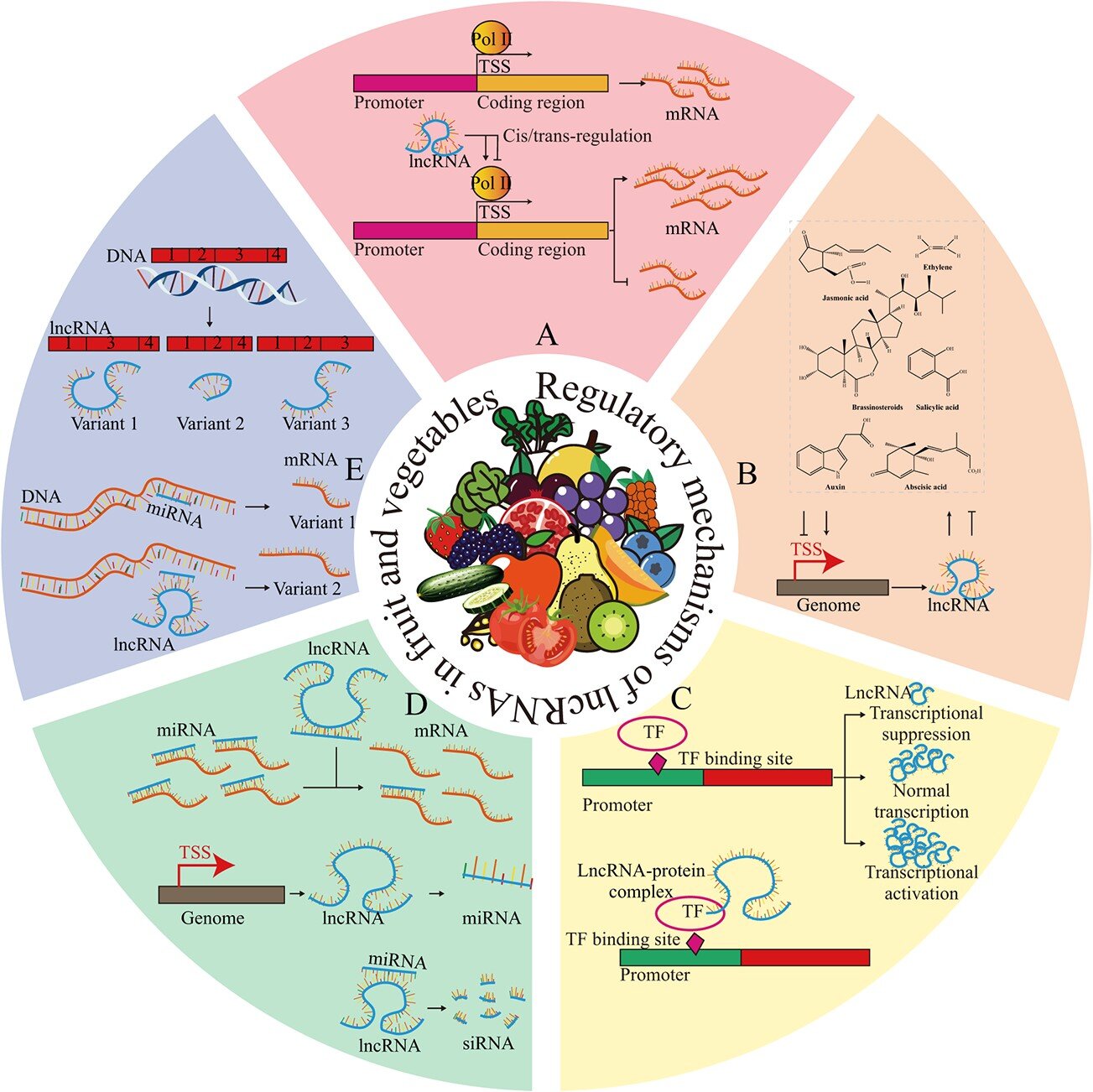With the development of genome sequencing technologies, many long non-coding RNAs (lncRNAs) have been identified in fruits and vegetables. Extensive research on lncRNAs has revealed their roles in regulating the expression of protein-coding genes at both transcriptional and post-transcriptional levels, thereby playing crucial roles in the growth, development, and stress responses in fruit and vegetables.
A new review published in Horticulture Research provides a comprehensive summary of the current understanding of the formation, functional characteristics, and regulatory mechanisms of lncRNAs in fruits and vegetables.
Based on their transcription direction and position relative to protein-coding genes, lncRNAs are classified into four types: intergenic lncRNAs (lincRNAs), long non-coding antisense transcripts (lncNATs), sense lncRNAs, and intronic lncRNAs (incRNAs). In this paper, the formation, and the basic characteristics of lncRNAs in fruits and vegetables are described from three aspects: abundance and size, structure and localization, decay and evolution.
The roles of lncRNAs in fruit and vegetables have been comprehensively summarized and discussed in recent research reports, covering various aspects including pigment accumulation, reproductive organ development, fruit ripening, as well as responses to nutrient deficiency, salt, drought, temperature, and pathogenic bacteria.
In addition, the authors have elucidated the regulatory mechanisms of lncRNAs in gene transcriptional regulation and alternative splicing, as well as the interactions between lncRNAs and plant hormones, transcription factors, and miRNAs.
The development of high-throughput sequencing technology has greatly improved the ability to discover, predict, and identify lncRNAs. However, there remains a scarcity of comprehensive lncRNA analysis data in plant databases pertaining to lncRNAs in fruits and vegetables, hindering the characterization of lncRNA expression and localization.
Moreover, the cost associated with subcellular localization experiments of lncRNAs, such as FISH, poses a limitation on lncRNA studies, highlighting the urgent need for the development of more affordable methods for lncRNAs research.
The exploration of the function and mechanism of lncRNAs in fruit and vegetable crops is still in its early stages, and the rapid development of technology will bring new opportunities and breakthroughs for lncRNA research in fruit and vegetables.
More information:
Xiuming Zhao et al, Emerging roles and mechanisms of lncRNAs in fruit and vegetables, Horticulture Research (2024). DOI: 10.1093/hr/uhae046
Citation:
Comprehensive review on the significant roles and regulatory mechanisms of lncRNAs in fruits and vegetables (2024, May 9)
retrieved 9 May 2024
from https://phys.org/news/2024-05-comprehensive-significant-roles-regulatory-mechanisms.html
This document is subject to copyright. Apart from any fair dealing for the purpose of private study or research, no
part may be reproduced without the written permission. The content is provided for information purposes only.

